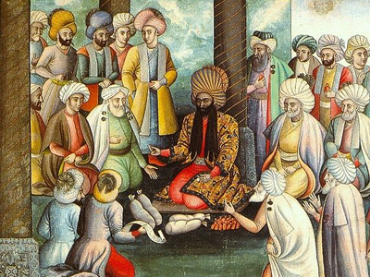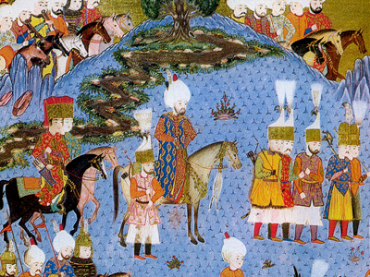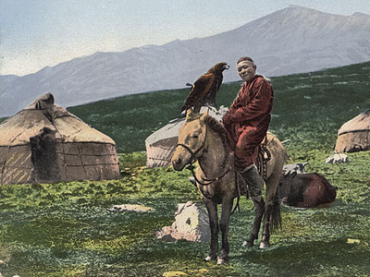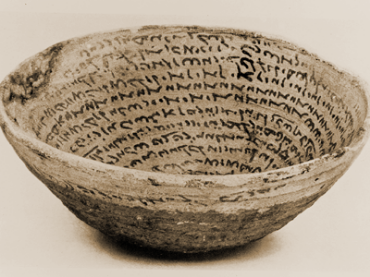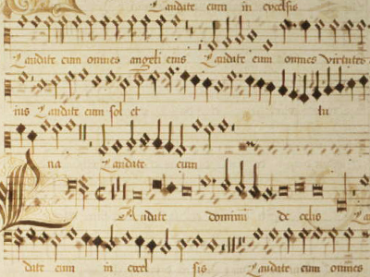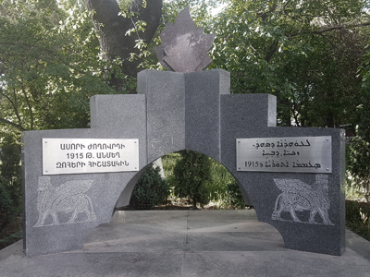History
The Creation of the Tribe Ptolemais at Athens
Series: Analecta Gorgiana 366
ISBN: 978-1-60724-653-4
Allan Johnson, a famous scholar of ancient civic administration, addresses the origins of the new tribe Ptolemais introduced in 3rd century BC Athens under obscure circumstances.
$38.00
The Classical Origin and Tradition of Literary Conceits
By M. B. Ogle
Series: Analecta Gorgiana 367
ISBN: 978-1-60724-654-1
Prof. Ogle traces the Classical roots of descriptions of feminine beauty in poetry of the English renaissance.
$36.00
De Lingua Latina
By Edwin Fay
Series: Analecta Gorgiana 368
ISBN: 978-1-60724-655-8
Fay's commentary and emmendation of Goetz and School's edition of Varro's de Lingua Latina.
$38.00
Caesar, Cicero and Ferrero
Series: Analecta Gorgiana 369
ISBN: 978-1-60724-656-5
Sihler's critique of Ferrero's history of Rome, using Cicero and Caesar's work to evaluate the Italian scholar's use of source material.
$40.00
The Hindu Beast Fable in the Light of Recent Studies
Series: Analecta Gorgiana 371
ISBN: 978-1-60724-658-9
Edgerton's review of Hertel's text of the Paficatantra with specific reference to Hertel's interpretation of the Beast myth.
$42.00
Studies in the Financial Administration of Athens
Series: Analecta Gorgiana 372
ISBN: 978-1-60724-659-6
Allan Johnson, a famous scholar of ancient civic administration, traces the development of Athenian financial administration in the Hellenistic era.
$36.00
Fatalism of the Greeks
By Abby Leech
Series: Analecta Gorgiana 373
ISBN: 978-1-60724-660-2
Leech argues against a simplistic view of the Greeks as radical fatalists, underlining their view of the equally prevalent Greek ideas of individual freedom and self-determination.
$36.00
Possible Historical Traces in the Doctrina Addai
Series: Analecta Gorgiana 399
ISBN: 978-1-60724-662-6
The Teaching of Addai is a Syriac document convincingly dated by some scholars in the fourth or fifth century AD. I agree with this dating, but I think that there may be some points containing possible historical traces that go back even to the first century AD, such as the letters exchanged by king Abgar and Tiberius. Some elements in them point to the real historical context of the reign of Abgar ‘the Black’ in the first century. The author of the Doctrina might have known the tradition of some historical letters written by Abgar and Tiberius.
$50.00
Eothen
By Alexander Kinglake; Introduction by Alison Dingle
Series: Exploring the House of Islam: Perceptions of Islam in the Period of Western Ascendancy 1800-1945 6
ISBN: 978-1-60724-664-0
Given the twenty-first century association between the Holy Land and the Bible, we may assume that such a relationship just exists, and that the land is like the Book and contains a timeless quality. Eothen requires us to question this supposition. Alexander Kinglake describes a Palestine which is largely a wilderness on the verge of being defined by the political and religious forces of the west. He offers us a glimpse into the past of a society as it begins to engage with the West.
$148.00
Bioarchaeology of the Near East 1 (2007)
Edited by Arkadiusz Sołtysiak
Series: Bioarchaeology of the Near East 1
ISBN: 978-1-60724-666-4
Bioarchaeology of the Near East (Volume 1, 2007) includes contributions by Theya Molleson, Douglas H. Ubelaker, and Joseph L. Rife, as well as short fieldwork reprots.
$172.00
Bioarchaeology of the Near East 2 (2008)
Edited by Arkadiusz Sołtysiak
Series: Bioarchaeology of the Near East 2
ISBN: 978-1-60724-667-1
Bioarchaeology of the Near East (Volume 2, 2008) includes contributions by Nathan K. Harper, Sherry C. Fox, Mateusz Baca, and Martyna Molak, as well as short fieldwork reprots.
$172.00
The Historiography of Music in Global Perspective
Edited by Sam Mirelman
Series: Gorgias Précis Portfolios 9
ISBN: 978-1-61143-669-3
This volume examines the perception of music’s past, in all its historical, geographical and cultural breadth. The wide-ranging collection of papers address the interpretation of past music cultures from the earliest records of antiquity until the present.
$137.00
Symbola Caelestis
Le symbolisme liturgique et paraliturgique dans le monde chrétien
Edited by Andrei A. Orlov & Basil Lourié
ISBN: 978-1-60724-665-7
The volume deals with the liturgical dimension of mystical, ascetical, and hymnographic texts and traditions within the Christian environment. Special attention is paid to liturgical texts of the Coptic and the Byzantine rite, especially in its Slavonic and Georgian versions. The volume also explores the Jewish background of some Christian liturgical settings and the afterlife of the Jewish priestly and liturgical traditions in the Christian milieu. The collection includes the critical edition of the early Slavonic version of the liturgy of the Presanctified Gifts accompanied by the historical study of this service.
$211.00
Die armenischen apokryphen Apostelakten II. Die Akten der Apostel Petrus und Paulus
Edited with an Introduction by Paul Vetter
Series: Analecta Gorgiana 408
ISBN: 978-1-60724-683-1
Paul Vetter presents here a critical edition of the Armenian version of the Acts of Peter and Paul along with a Greek translation. Vetter’s introduction to the text includes a discussion of the complex transmission history evident in the manuscripts.
$53.00
Une nouvelle récension de la vie d'Abercius
Edited with an Introduction by Élie Batareikh
Series: Analecta Gorgiana 409
ISBN: 978-1-60724-684-8
The Life of Abercius, which received much attention after the archaeological discovery of the “inscription of Abercius,” previously existed in two recensions. Élie Batareikh found a manuscript containing a third recension and publishes here the Greek text of that recension.
$37.00
Die nichtgriechischen Paralleltexte zum achten Buche der Apostolischen Konstitutionen
Series: Analecta Gorgiana 410
ISBN: 978-1-60724-687-9
Book VIII of the Apostolic Constitutions has one of the most complex transmission histories of any text from the Christian Orient. Anton Baumstark describes various sources for parallel texts in order to explicate its translation history in the Oriental languages.
$39.00
Die armenischen apokryphen Apostelakten I. Das gnostische martyrium Petri
Edited with an Introduction by Paul Vetter
Series: Analecta Gorgiana 411
ISBN: 978-1-60724-688-6
Paul Vetter presents the Armenian text, along with a Greek translation, of the “Gnostic Martyrdom of Peter” from the Apocryphal Acts of the Apostles. The article also includes an appendix in which Vetter describes the manuscripts used in the collation.
$35.00
Der Katholikos Timotheos I und seine Briefe
Translation and Introduction by Oskar Braun
Series: Analecta Gorgiana 412
ISBN: 978-1-60724-689-3
Oskar Braun provides a brief introduction to the life and career of Patriarch Timothy I, including a list of his writings with special attention to his letters and the Syriac text and German translation for five of Timothy’s letters.
$44.00
Eine syrische "traditio legis" und ihre Parallelen
Series: Analecta Gorgiana 414
ISBN: 978-1-60724-691-6
Early Christian artistic renderings of the traditio legis, exhibit a variety of commonalities and differences. Anton Baumstark compares various versions of the scene and finds evidence of both a Western and an Eastern version represented in multiple sources.
$36.00
"Ligurgia S. Gregorii Magni," eine griechische Uebersetzung der römischen Messe
Edited with an Introduction by Anton Baumstark
Series: Analecta Gorgiana 415
ISBN: 978-1-60724-692-3
Anton Baumstark presents the complete Greek text of the Liturgy of Saint Gregory the Great. The liturgy was highly influential in the Latin tradition, but as evidenced by the early translation, it also had limited circulation in the Greek tradition.
$36.00
Die anonyme Schrift "Abhandlung über den Glauben der Syrer"
Edited with an Introduction by Franz Cöln
Series: Analecta Gorgiana 416
ISBN: 978-1-60724-693-0
Franz Cöln presents here the Arabic text of an anonymous writing defending the beliefs of the Jacobite Church against the beliefs of other traditions. The text includes a critical apparatus and is accompanied by a German translation.
$46.00
Zwei antihäresianische Traktate des Melchiten Paulus er-Râhib
Translation and Introduction by Joseph Berenbach
Series: Analecta Gorgiana 417
ISBN: 978-1-60724-694-7
Joseph Berenbach presents here the Arabic text and German translation of an important anti-heretical work by the Melkite Christian author Paul er-Rahib. Berenbach describes the manuscripts used in the critical text and introduces the character of Paul.
$38.00
Jacobus Baradaeüs, de stichter der syrische monophysietische kerk
Series: Syriac Studies Library 9
ISBN: 978-1-60724-783-8
In this study, H. G. Kleyn deals with the life and works of Jacob Baradaeus and the role he played in the “monophysite” church to the time of his death in 578, including a thorough outline of Jacob’s writings.
$168.00
Ein nestorianisches Bruchstück zur Kirchengeschichte des 4 und 5 Jahrhunderts
Edited with an Introduction by Emil Goeller
Series: Analecta Gorgiana 418
ISBN: 978-1-60724-709-8
Emil Goeller introduces and provides the text of a unique resource for the ecclesiastical history of the “Nestorian” church. The text, presented in Syriac with a Latin translation, is a compilation of historical sources focused on the story of Nestorius.
$36.00
Der Nomokanon Miha'ils von Malig
Translation and Introduction by Franz Cöln
Series: Analecta Gorgiana 424
ISBN: 978-1-60724-715-9
The Nomocanons of the Eastern Orthodox traditions are valuable historical sources for the church traditions they represent. Franz Cöln presents here the collated text of a Nomocanon attributed to Miha’il of Malig and preserved in Garshuni and Arabic manuscripts.
$133.00
Filter by
Filter by price
Filter by manufacturer

